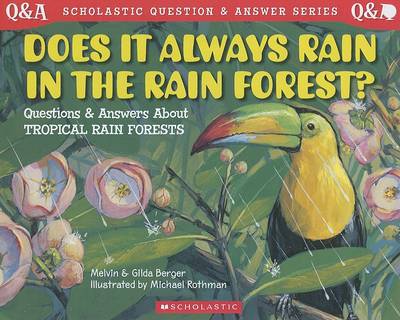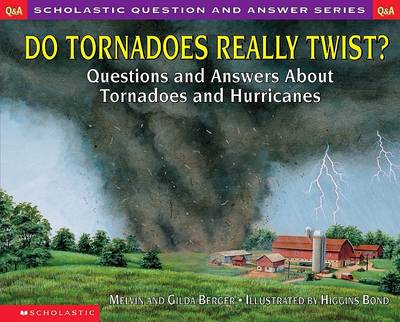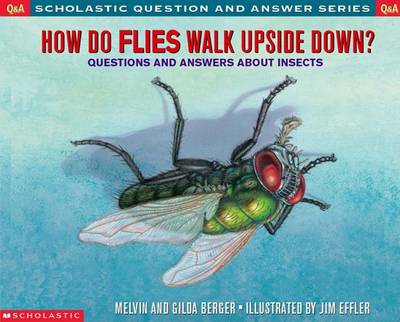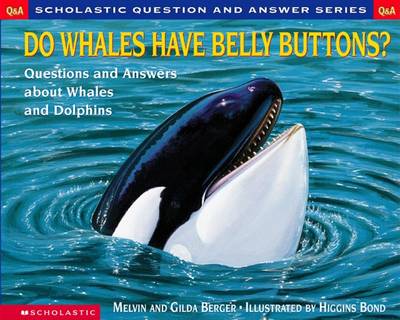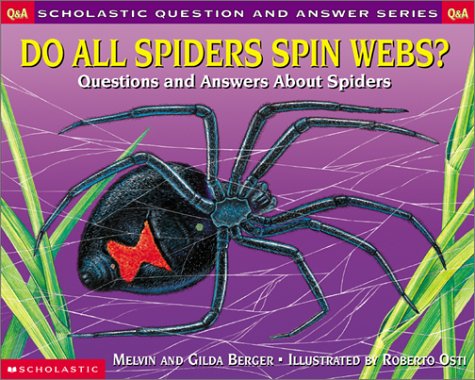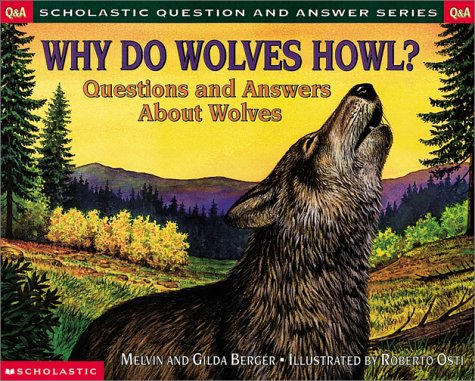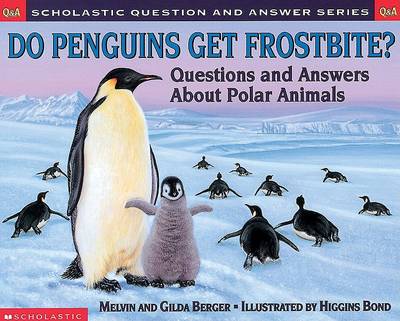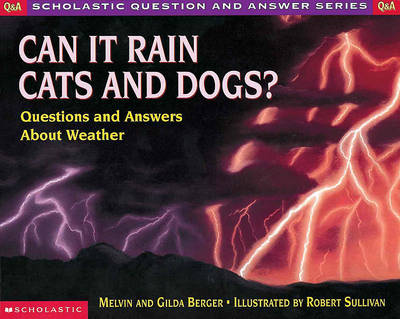Scholastic Question & Answer
26 total works
Q: Does it always rain in the rain forest?
A: Yes. You can count on some rain just about every afternoon in a tropical rain forest.
In this colorful introduction to tropical rain forests, kids will learn all about the animals, plants, and people that live together in this complex ecosystem. Readers will find out that the leaves of one rain forest tree can be 70 feet long, that hummingbirds fly like helicopters, and that the okapi has a 14-inch black tongue!
Did Dinosaurs Live in Your Backyard?
by Melvin Berger, Gilda Berger, and Alan Male
How Do Flies Walk Upside Down?
by Melvin Berger, Gilda Berger, and James M Effler
Do Whales Have Belly Buttons?
by Melvin Berger, Gilda Berger, and Higgins Bond


